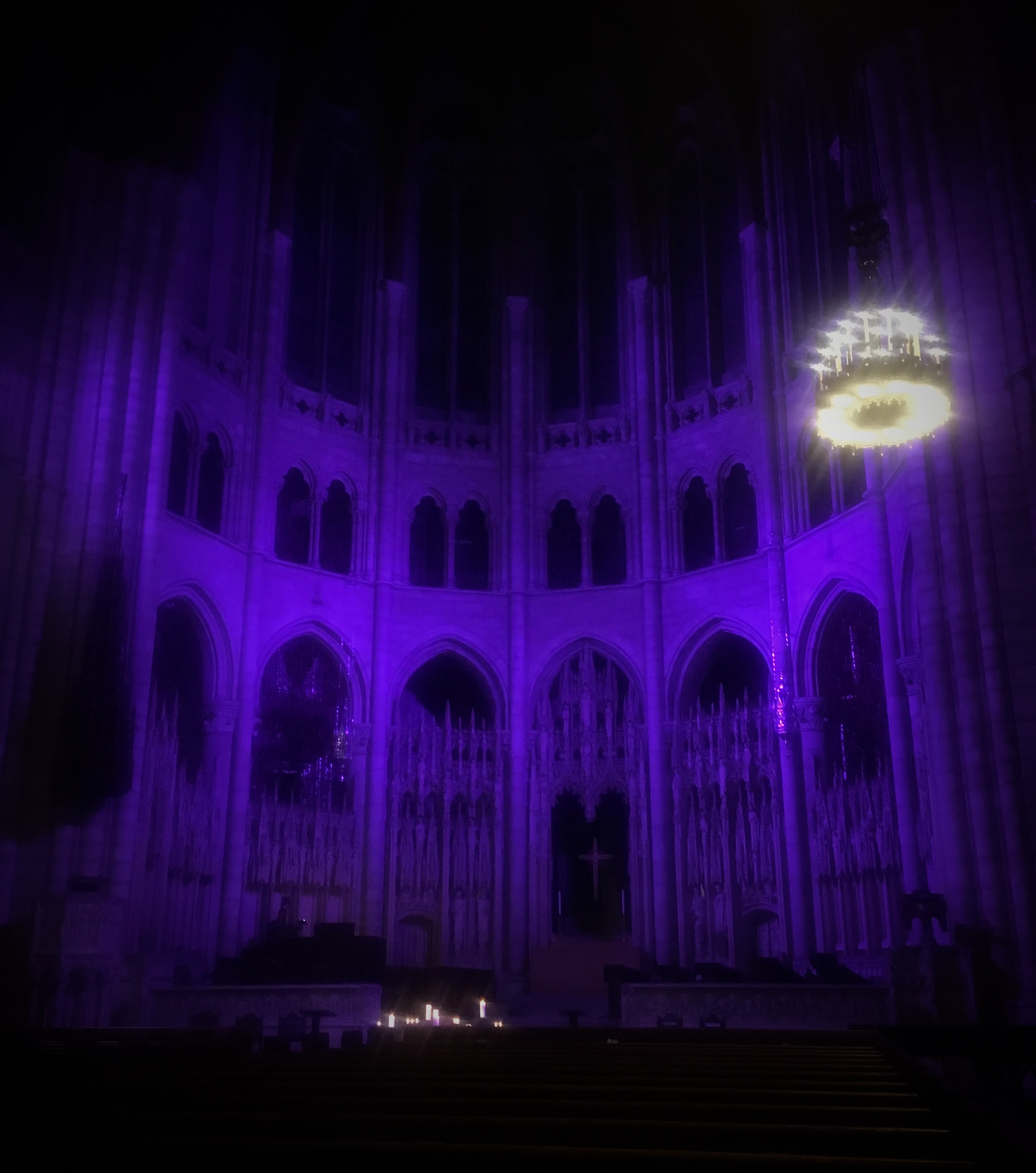March 8, 2019
Dear Friends,
I was sitting in the beautiful sanctuary (nave) of The Riverside Church a couple of days ago for the evening Ash Wednesday service. Being one of just a few people who had arrived nearly a half-hour before the service was scheduled to begin, I quietly, in a well-positioned pew, looked forward and gazed up at a lavender haze created by the lights shining softly on the chancel. The stark dark beauty of that muted purple that seemed to cloak the limestone, and the quiet of those moments, stilled my heart.
Cheryl Dudley
As a life-long American Baptist, I grew up in a very small church that didn’t perform formal liturgical traditions. The small Baptist church that I grew up in had holy practices and seasoned rituals that brought us together in a special way, particularly during certain times of the year. We looked forward to extraordinary times in the life of the church.
As I became more familiar with the church calendar and its markers, Ash Wednesday always troubled my soul (which, indeed, may be the point of observing it). To be reminded that we are dust, and we have come from dust, and will return to dust, is troubling. We are confronted, by bearing the mark of ashes—made from dust, with our mortality, and the impermanence of our lives in this world. In some ways, we wrestle with our mortality our whole life long. Yet, we set aside these 40 days toward the Cross, to wrestle with it in particular. Many people forgo certain things during Lent: sweet food, meat, treats, or activities. Others take on certain things, like making additional commitments or taking on deeper practices. We these observances that we take on or release, in their purpose, deepen our experience of God. Pastor Butler shared that she was surprised to read a statistic that Ash Wednesday is the most highly attended service in the Christian calendar. I was surprised too, and skeptical… about the motivations persons have for trickling in throughout the day on this given Wednesday, to receive and bear the mark. If we are paying attention, we all wrestle with our mortality as we press ourselves forward anyway in the hope of Christ’s emptied tomb.
Today is International Women’s Day. It is fortuitous that this year Women’s Day appears in the same week as the beginning of Lent. As many of you know, March is Women’s History Month. More than a few churches celebrate Women’s Day in March, and during this month, we laud and extol the gifts, graces, and consistent strengths of women, without whom the church would be in peril. We are reminded that March is “Women’s History Month” because women are commemorated throughout the month in the media, in public life, and yet also in commercial ways. When March expires on the 31st, too often the honoring of women expires. One day we will not need a set aside month, but until then we can use this month to help forge a more gender-balanced world.
This year, during March and for Lent, I am choosing to remember and study women in particular. Women have been key characters, sages, and figures in scripture and in our faith communities that have inspired us to greater faith, courage, deeper learning, and hope. Perhaps you will join me in this practice this month?
I am often drawn to the various widows depicted in scripture, there are many of them, most of them un-named, or referenced in respect to where they lived in order to distinguish one from the other. One widow I’m drawn to for this letter to you is the one who was married and widowed seven (7) times before dying herself. The story is found in the Gospel of Matthew 22:23-33. In the story, in answering a question, Jesus tells a parable of a woman who had been married seven times. Her first husband died, and as the law provided, she married her husband’s brother in order to produce children in her late husband’s name. Her second husband died too; she married a third brother, and he died, and so on through seven brothers. Each of her husbands proceeded her in death. We don’t hear if “the widow” was successful in becoming a mother, but we do know she had many husbands. The debate in Jesus’ parable was, whom did she belong to, and whom would she be reunited with in the life to come? Would it be her first husband, or one of the successive other brothers? The image that Jesus depicts is that the widow (and the rest of us) in death are transposed into another reality, where she was no longer the partner or property of another, but her own, God’s own. Her once lowly state, of being without husband and without children, was elevated in the power of the Gospel.
The passage says to us, “God isn’t the God of the dead, but of the living.” The God of Abraham, Isaac, and Jacob, surely, but also God of Sarai, Hagar, Leah, Rachel and Rebekah. The resurrection we anticipate is our hope for living. Ironically, we must put to death some things first: patriarchal assumptions, quests for position, prestige, and power. Some may have to put to death their lowly understanding of who they are and what God may do through them. We are dust, but let's live fully into these 40 days and see what God has in store for us this season.
May our ashes be transformed into beauty.
I remain yours, in the hope of Christ,
The Rev. Dr. Cheryl F. Dudley
Regional Executive Minister
American Baptist Churches of Metropolitan New York


